by The Curious Scribbler
There is a very chilly naked woman emerging from a thicket on the sea front at Aberystwyth. She faces the sea, in the teeth of every westerly gale, on the margin of the ground once occupied by the Norman castle. She is, to say the least, a well built girl, larger than life and fashioned in bronze. No wispy maiden she, but a flesh and blood woman with strong thighs, pert, full breasts, large capable hands and a purposeful expression.
As the authors of the recent Pevsner sedately remark, “ Unexpectedly sensual for a Non-conformist country”.
For this huge empowered woman is the lower ornament on the Aberystwyth War Memorial, erected to commemorate the dead of the First World War. Rising from her octagonal plinth is a tapered shaft of stone, and on top of it a pretty, rather fey angel with billowing dress and an elegant pair of wings. She appears to be about to lob a wreath of laurel, hoop-la style, onto the head of her companion below.
The memorial is the work of an Italian sculptor, Mario Rutelli, and was erected fairly long after the close of war, in 1923. The angel above is, apparently, the Winged Victory, whilst the powerful nude represents Humanity emerging from the Horrors of War. The bronze thicket from which she strains to escape is thought by some to be seaweed, by others to be rifles transmuted back into bushes.
Later tablets on the plinth commemorate the Aberystwyth dead of the Second World War, and the monument is the final destination of the Poppy day parade.
This western extremity of the headland north of the harbour is a place of great beauty, commanding views along the coast southward to the sharply truncated cliff of Alltwen. Framed by woodland a little inland from the sea squats a grey stone mansion, recently released by its new owner from a dense surrounding of self-seeded sycamore and ash. This was the home of Matthew Lewis Vaughan Davies, later Lord Ystwyth, Liberal MP for Aberystwyth from 1895 to 1921. Lord Ystwyth was a bit of a philanderer in his life and died at the great age of 94. Posthumously, historians have judged him harshly. However he was undoubtedly a mover and shaker in his time, founder among other organisations, of the Royal Welsh Agricultural Show, and in 1923 he was made Honorary Freeman of the Borough of Aberystwyth. It appears that it was his influence which provided his home town with what is surely the least sombre war memorial in the land.

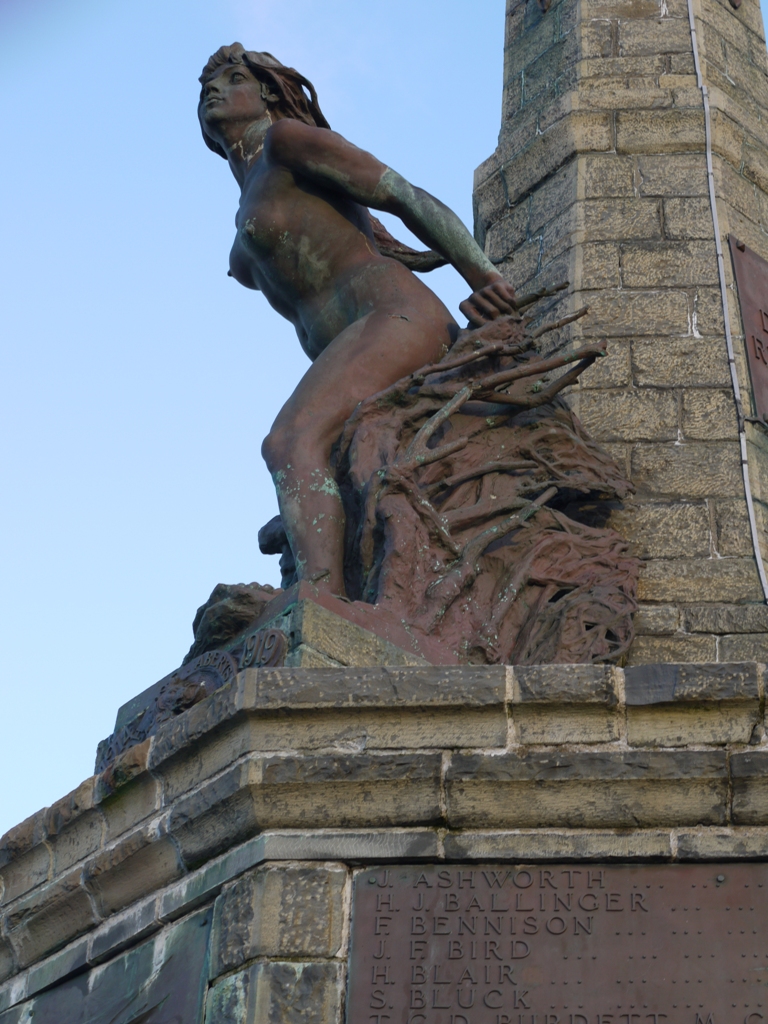
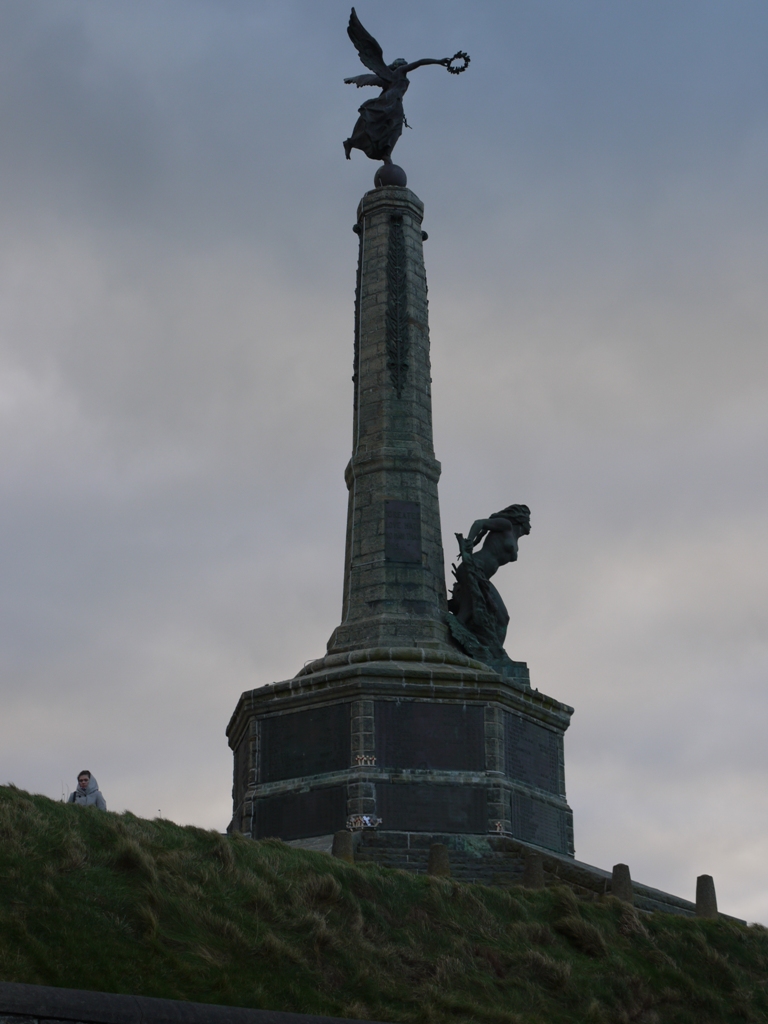
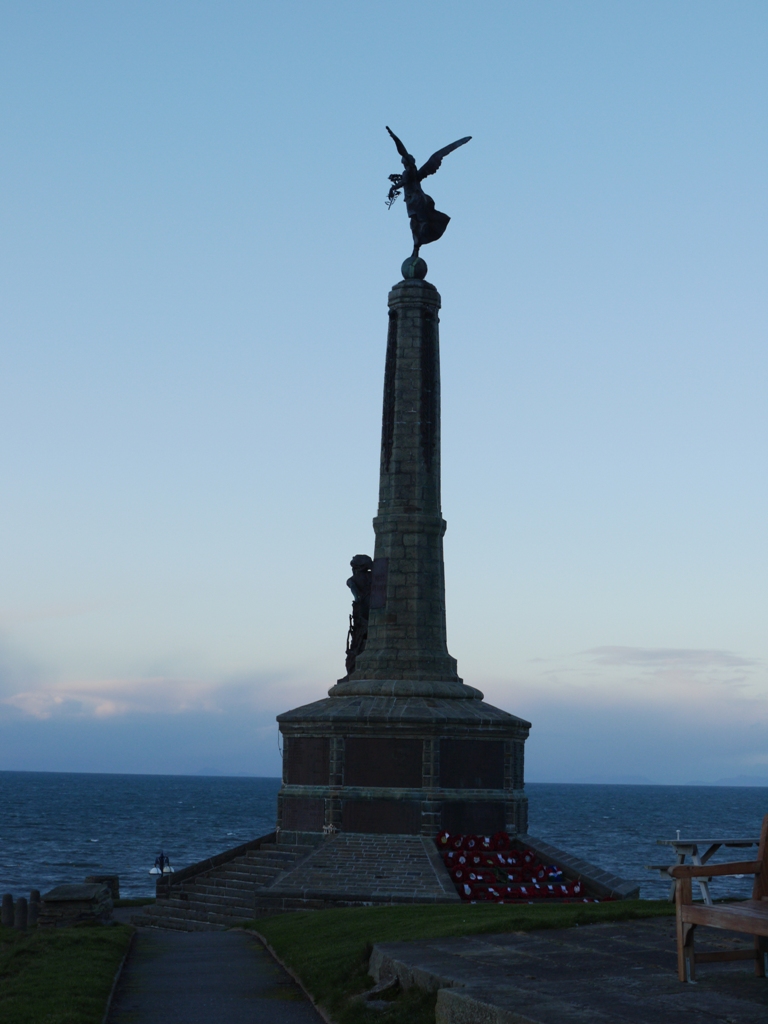
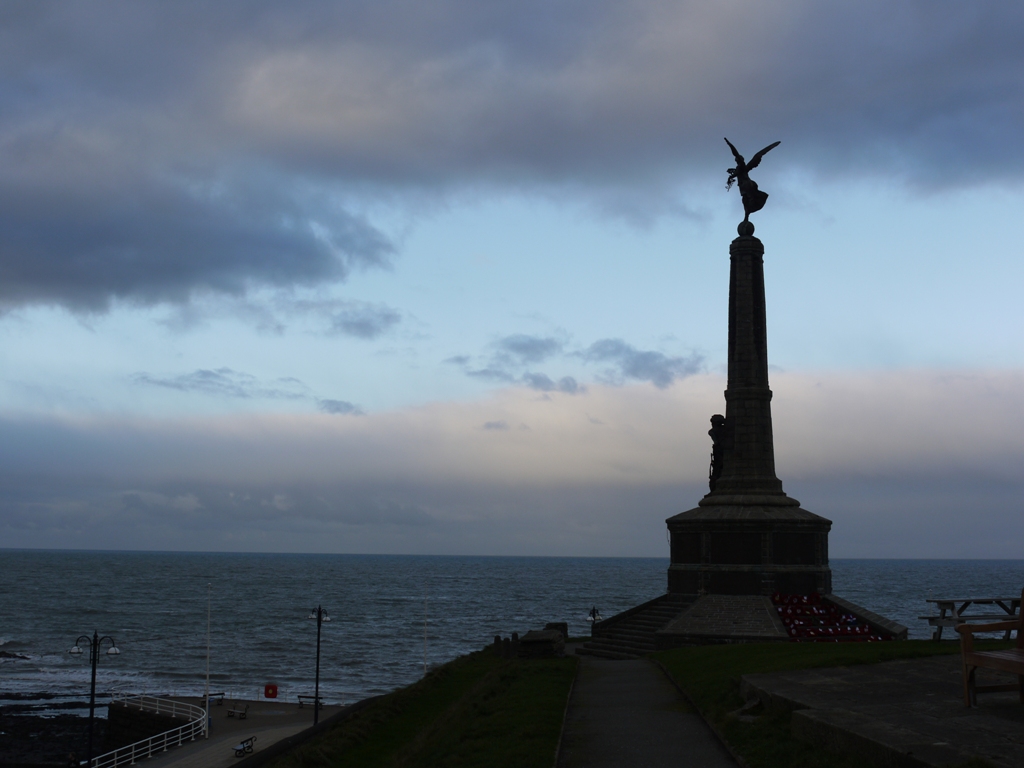
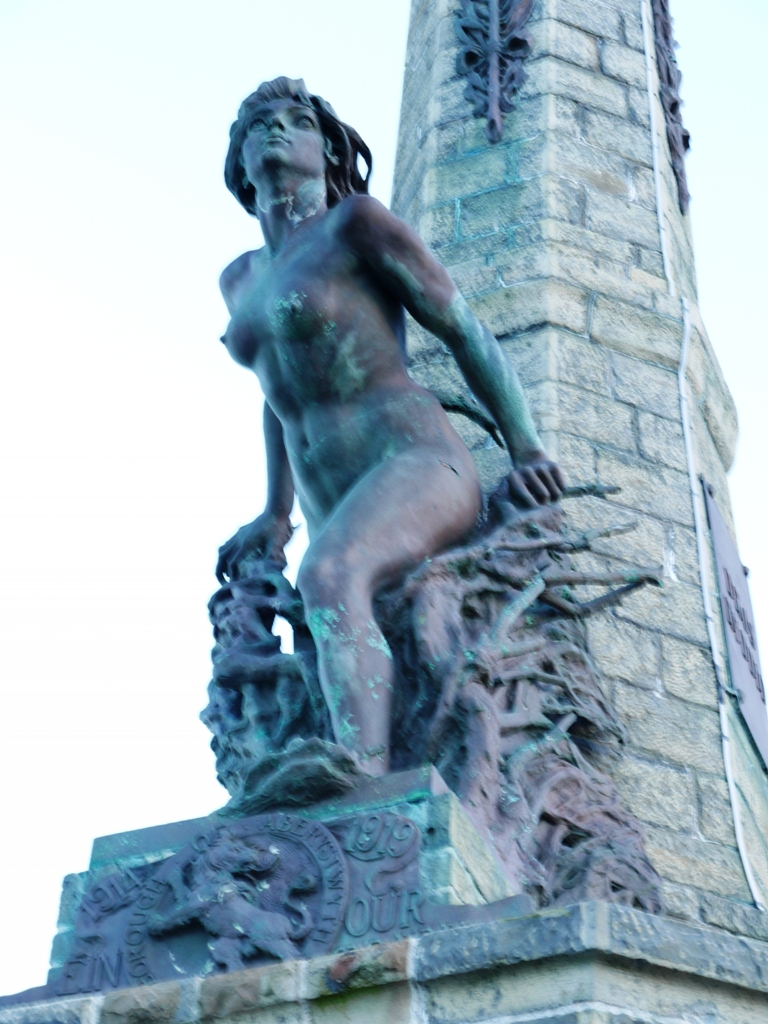
Jagger’s RA memorial in Hyde Park was not inveiled until 1925. I wonder whether 1923 for the Aberystyth memorial was sharpish or more usual? According to Juliette Nicholson in The Great Silence, the origianl 1919 cenotaph was lathe and plaster and even the name was new: designed, dubbed and constructed by Edward Lutyens. Might these dates indicate yet another aspect of the devastation of the Great War to industry, manpower – perhaps even committees who pronounced on these things?
Interesting post and a very raunchy young lady – she looks very art deco. The magnificent and awe-inspiring Theipval Memorial to the Missing of the Somme wasn’t unveiled until 1932 and the Canadian Memorial at Vimy Ridge wasn’t unveiled until July 1936. My own North Essex town of Great Dunmow didn’t unveil their war memorial until July 1921. This is despite the fact that a committee for it had started in April 1918 – when the final great German offence was well under way and an allied victory was far from guaranteed. Reading the meeting minutes for this memorial show that it was very controversial and there were heightened emotions from the committee members with them all resigning during the final days of the war. The story of the creation of Great Dunmow’s war memorial is here http://www.essexvoicespast.com/war-and-remembrance-the-making-of-a-war-memorial/
Mario Rutelli, the author of all the art pieces described in this interesting site, was son of arch. chevalier Giovanni Rutelli and of Vita Romano;
prof. arch. chevalier Mario Rutelli, a famous italian sculptor artist, is the author of hundreds of art pieces placed in Italy, Sicily, England, and Germany;
his paternal line (the Rutellis) is a very very old – true british celtic line (R/DF21 haplogroup) which came into the italian peninsula many centuries ago (about 1300 to 1400 years ago), and this is confirmed by multiple dna testings;
for infact, Mario Rutelli’s ancestral experience with his art shows altogether this very deep patrilineal connection with the British Isles, and his authentic -celtic- art capacities present and alive in his dna, as well as for many other Rutelli artists of the same old family;
Tony .
She isn’t raunchy, though – the nudity is far more likely to symbolise vulnerability rather than sexuality, and a vulnerable yet proud, strong, fearless Humanity emerging from the depths of war is a very powerful image and one that is appropriate for a war memorial. I really love this statue.
I also love the statue. However as war memorials go, she is very unusual! And I feel I have established evidence that this figure was not initially created with this function in mind.
That anyone thinks this breathtaking statue is “raunchy” says more about them than it does about the statue. Did any of you look at her exceptionally beautiful and noble face, her full, flowing hair? Her exquisite Welsh body (I know because my wife is Welsh and a more slender version of this figure), too, is a brilliant representation of the beauty, strength and resilience of humanity emerging from the grotesque horror of war. Nude does not equal “raunchy” — or do you label as “raunchy” Michaelangelo’s David, Rodin’s Thinker, the Venus de Milo….
I have to object that the model for this statue was almost certainly not a Welsh but an Italian body! See my blog of 27 Sept 2014 for another version of the sculpture, located in Rome, which pre-dates the Aberystwyth’s ‘Truth’ by a decade or so!
Not mutually exclusive that a Welsh woman and Italian woman can have similar bodies. It may have been an Italian model but it still looks like the Welsh body I know best.
Pingback: Aberystwyth Castle - Discover Your Wales